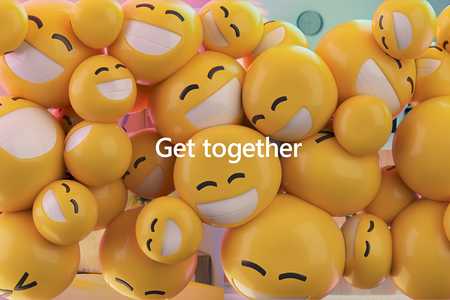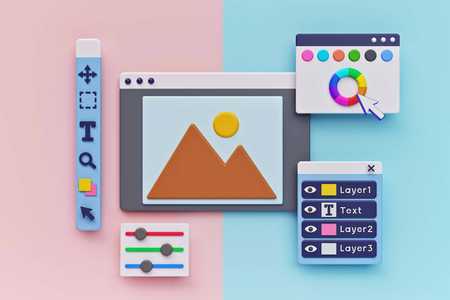Blog
The State of “Inclusive Design” in 2020 – a study of importance towards Usability and Identity
Simran Gill
23 January 2020
2020 started with over 4 Billion individuals using the internet across the globe, offering insights, change and challenges for all of us in the industry. However, with an ever growing amount of people using the world wide web, comes a growing amount of people who are being underrepresented by baseline designs, thoughts and common assumptions – a fact that can easily have an impact on both the emotional and physical wellbeing of the user.
So, to combat this issue, we’ve put together some information on why it’s so important that those designing and working directly in the digital sphere commit to changing the ways in which they think, open their products to new experiences via a wider range of abilities, and design in ways that are both inclusive and represent a wide range of people and diversities present by internet users around the world.
“Our greatest asset when we design is human diversity.” – Tim Allen, AirBnB
So, what is Inclusive Design?
Inclusive Design is the way of approaching design with the ideology and practice of creating products and work that ensure experiences can be enjoyed by all.
Design Plans In the world of digital design, those thinking about inclusiveness generally jump straight to considering design “accessibility”, focusing on little things such as ensuring colour pallet choices adhere to W3C 2.1 Guidelines or other small areas of focus. However, in today’s day and age, gender and cultural identity are so often ignored when it comes to the ways in which we design. These areas are so important as they serve to heavily influence and mold users, allowing them to build trust in the sites they’re interacting with, and feel equally represented with a digital voice and presence.
Old Idea Of Inclusive Design Proposed Idea Of Inclusive Design While commonly overlooked, the ideology of Inclusive Design isn’t all that new. Through Search Engine Optimisation, many companies and digital marketers have been involved in making products inclusive by means of simple steps such as descriptive Alt tags and relatable content. Small changes such as these can add context to content for those who are visually impaired, and help users better navigate the user journey from “search to answer”.
So, why does this all matter?
As we all know, the web is a fast moving machine that will always be susceptible to change. The usual and traditional set of thoughts suggests that this change is commonly dictated by technology and moreso, by trends… but to be honest, any change that is outside of the regular remit is commonly not embraced. Looking at things from an inclusive perspective, change should not only be generated through design trends and tech, but designers should be ensuring innovation moves forward through the consideration of social and disability factors such as the below:
Disabilities:
Auditory
Cognitive
Neurological
Physical
Speech
Visual
Social factors:
Race
Gender identity
Sexuality
Political views
Reading proficiency
Economic
Culture & religion
With these factors in mind, it is curious to see how the population has diversified over the last few years. Specifically, there are a couple of points that are important to keep in mind:
- As of 2016, a study by J.Walter Thompson Innovation Group, forecasted only 48 percent of Gen Zs identify as exclusively heterosexual, compared to 65 percent of millennials aged 21 to 34.
- In 2018, 1 billion people with disabilities, making that around 15% of the global population, with around 190 million of them experiencing severe disabilities existed according to the World Bank Statistics.
To build on this, Forrester’s Inclusive Design Imperative highlights that many companies focus on marketing specifically to the 80% of their users who are considered “normal” or “average according, completely excluding the remaining 20%.
In terms of business, Extra Cost Commission found:
- £2 billion is lost every month by businesses only catering to “normal” people.
- 73% of potentially disabled people find conflict on 1 in 4 of websites they visit.
Stats like these show how people are constantly changing and we as designers have the obligation and the opportunity to design products to follow suit.
Given the relevance, it is important to keep in mind that social inclusivity is an important and empowering issue contributing towards equality and basic human rights. Yet, we still find ourselves asking what makes certain online products, tools, and software inclusive, or different? Where is there web design inclusivity?
(For more information on why designing in an inclusive manner is so important, check out the Design Council’s article on taking your design beyond Accessibility – Inclusive Design: Beyond Accessibility)
Problems we need to face!
While taking on inclusive design is so easy, we still see designers around the world enabling a content imbalance by failing to optimise simple web features such as login and contact forms, online surveys, stereotypical content and colours, images and videos, etc.
Commonly overlooked due to regular habits or for aesthetic reasoning, changes to these features can easily be included simply by looking out of your own lens and taking into account who your audience really is, what they want and need, and how your design choices will affect them.
For specific products, considering simple things can make a huge difference in the levels of inclusiveness your site promotes. Reviewing the following are great places to start:
- Font Size
- Imagery encapsulating a selection of people
- Content describing stereotypical situations
- Questions asking solely for gender or race
- Asking people to click when an option can be made automated
- Language Barriers
- Icons or controls which are unambiguous
- Favour a demographic due to its commutative nature or lack of feedback
- Colour contrast
Male Female Tick Boxes
A product should be designed in such a way that allows it to be used and navigated easily, while being instantly identifiable and relatable to those using it. Of course the sole purpose of any product is to give solutions to possible problems and as a designer, we should aim to find the beauty within the constraints to realise how solving one issue for an individual can result in better experience for others too!
“The companies that get innovation right, again and again, are the ones that feel what their customers feel. That is true user-centred innovation’”
– Sohrab Vossoughi, Ziba
A great and simple example of ensuring users feel included is Google’s recent release of their updated list of gender neutral emojis to cater to trans and non binary. This simple design feature is not only inclusive but allows for better discussions and breaks down barriers within social situations.
So, how do we find solutions?
The idea of “Paradox of Specificity” fits here perfectly! It theorizes that if we focus on the needs of the narrow market, the results seen are far more broadly useful!
Anyone in design will tell you usability and accessibility are two of the most important factors that should guide you to your end goal and product. These areas, paired with inclusive design, should be interchangeable and not recognising the differences can lead to terrible consequences.
So, why not include everyone and allow all users to experience meaningful, functional products that meet the needs of all individuals.
“Look at the opportunity of design to empower everyone!” – Dan Formosa, Smart Design
Start with the basics… rethink your design decisions and realise the importance of language.
An example for me, is, the term “User”. In 2020, this term should be considered lazy, and quite frankly, allows for unnecessary excuses. We are a community of individuals trying to find who we are and how to belong – we aren’t users, we are humans, people! We give emotive reasoning to everything we touch, see and read and of course, react in diverse ways due to the variety of experiences in the real world. Instead of “user”, use terms like “person” or “human”, use names – try and target individuals not a group, be in their shoes and see through their lens.
So why is this important? Because what we make has consequences outside of the finished product. We as designers help influence those we are creating for, we help reflect society through our craft. It’s no longer about just reaching a goal but the sign posts, the road, the welcome.
To simply put it, inclusive design needs inclusive designers.
Lets fix it
Alongside the abolishment of lazy, non-inclusive terms such as “user”, there are a number of other ways designers can accommodate different groups and ultimately, make the web a more diverse place:
Imagery: use a diverse selection of subjects that are relative to the message your product wants to communicate.
Illustrations: think about cultural, physical and gender neutral characteristics.
Gaining personal Information: Realise and cater for those that identify as gender neutral when collecting personal information. Be sensitive and use welcoming language while giving clear options, i.e. “preferred name” or “Prefer not to say”, if the user doesn’t want to give you their personal info.
Diverse team members: Include more then the usual in discussions, ideations and in testing.
Work on SEO best practices and relative inclusive content: Avoid forces people using only one service, e.g contact us – provide accessible alterations, FAQs, forms, telephone, social media. Use generic tag elements in code for screen readers.
Do competitor audience research/analysis: find solutions to where your competitors are going wrong.
Microsoft’s inclusive design principles summarise it very well…
Recognise exclusion: Exclusion happens when we solve problems using our own biases. Seek out exclusions as opportunities to create new ideas and inclusive designs.
Learn from human diversity: Human beings are the real experts in adapting to diversity. Inclusive design puts people at the centre from the very start of the process, and those fresh, diverse perspectives are the key to true insight.
Solve for one, extend to many: Everyone has abilities, and limits to those abilities. Designing for people with disabilities actually results in designs that benefit people, universally. Constraints are a beautiful thing.
Ultimately, designers should be aspiring to create solutions for each individual their product will interact with, not treat it/them as an obstacle or a burden.
Of course, inclusivity should be a culture shift that feeds into all of the processes and services offered across your company, but for now, one thing at a time.
While it feeds into all the processes and services, be sure to review and optimise each aspect of your product to allow them to consistently, inclusive and easily identifiable to both the UI and human using the product.
In Conclusion
The 4+ billion people accessing the internet around the world are a collection of vastly different individuals searching for answers, both knowingly and unknowingly, as they cascade and navigate this big old information hub in attempt to identify and connect.
Inclusive design should be included (sorry for the pun) in all design projects, big or small or simply be left out. This means creating bespoke experiences no matter the differences and following guidelines which will in turn boost page visits, generate trust, easier UI and of course make your web pages much more SEO-friendly.
‘Finding an emotional connection between things, services and people is very important to what we as designers do – OR what we should do!’ – Richard Seymour, Seymourpowell
For more information on how we at Blueclaw ensure that all of our projects and designers are as inclusive as possible, get in touch!
Written by
Simran Gill
Latest posts.
Contact.
We’re always keen to talk search marketing.
We’d love to chat with you about your next project and goals, or simply share some additional insight into the industry and how we could potentially work together to drive growth.


